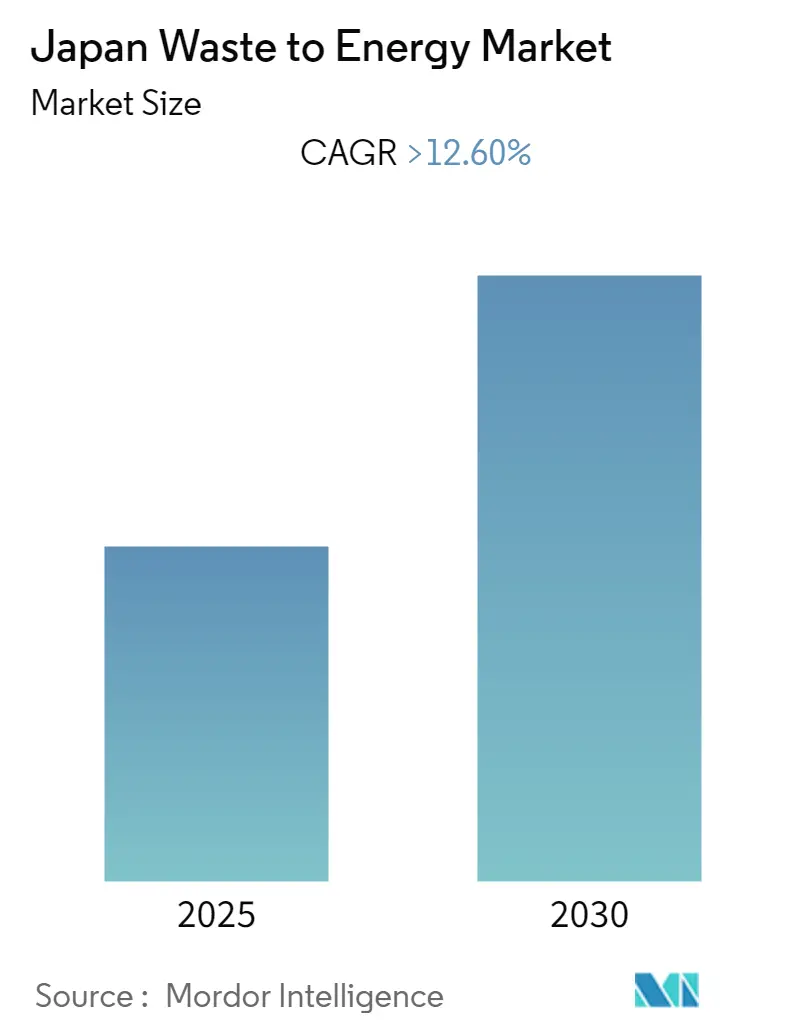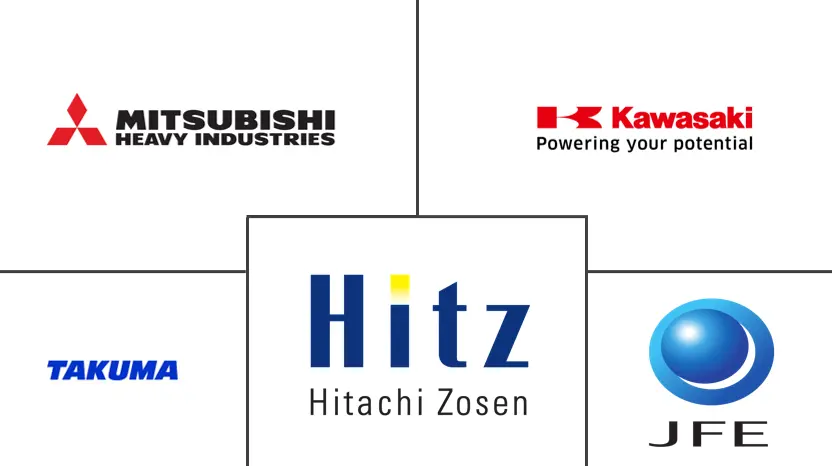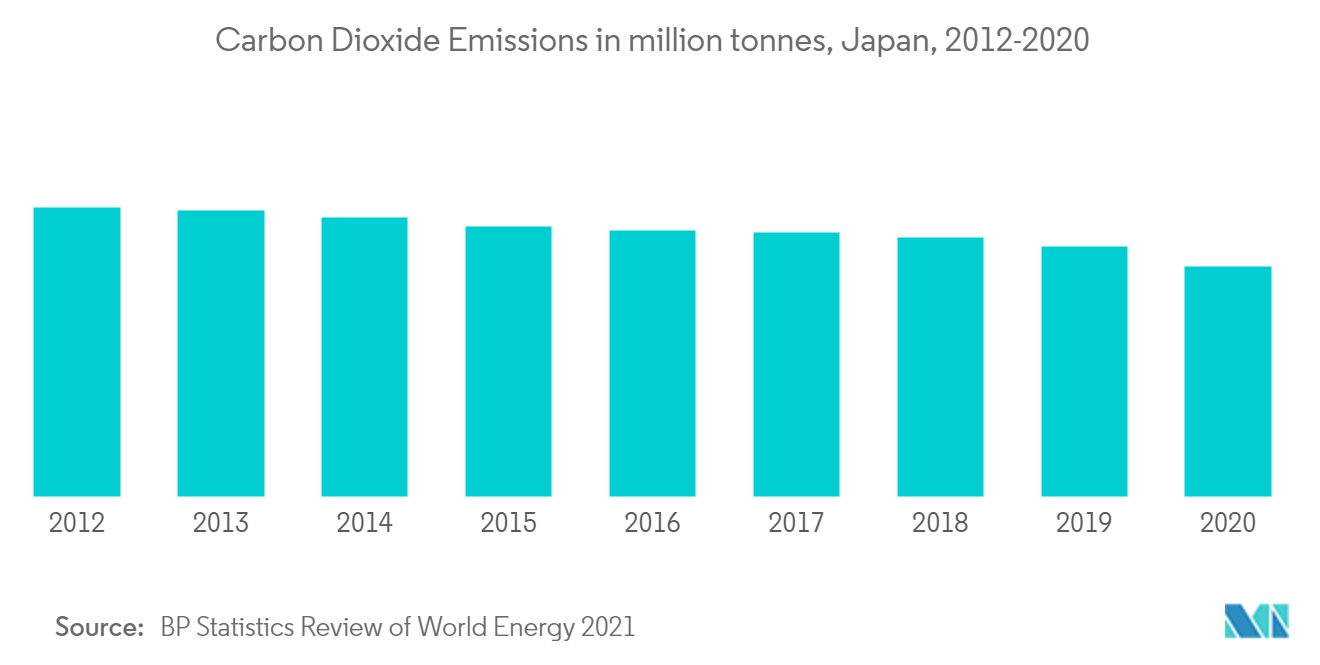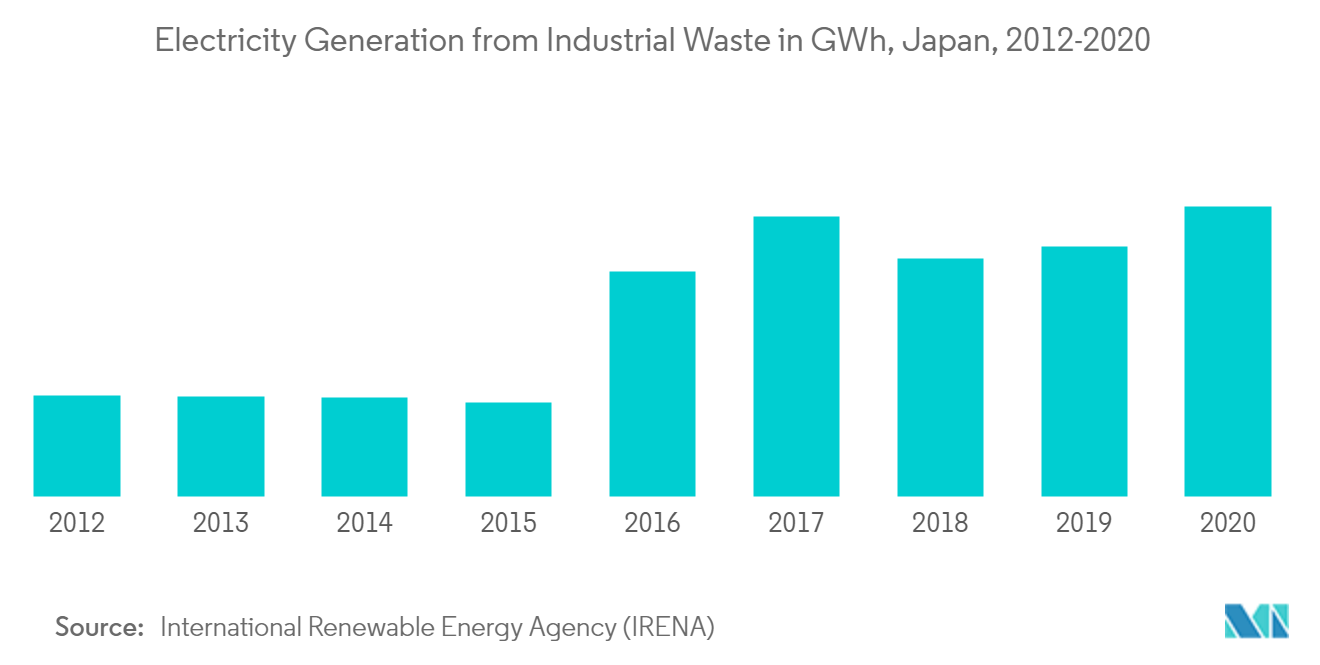
| Study Period | 2020 - 2030 |
| Base Year For Estimation | 2024 |
| Forecast Data Period | 2025 - 2030 |
| Historical Data Period | 2020 - 2023 |
| CAGR | 12.60 % |
| Market Concentration | Medium |
Major Players
*Disclaimer: Major Players sorted in no particular order |
Japan Waste to Energy Market Analysis
The Japan Waste to Energy Market is expected to register a CAGR of greater than 12.6% during the forecast period.
- Thermal technology is expected to dominate the waste-to-energy market, owing to the increasing development in incineration, gasification technologies, and the growing amount of waste generated.
- Increasing investments in aerobic and anaerobic digestion-related R&D activities to ensure reliability in terms of environmental effects are expected to provide lucrative opportunities for the market's growth in the future.
- Japan is focusing on improving its incineration technologies to reduce harmful emissions from waste to energy conversion, which is expected to drive the market during the forecast period.
Japan Waste to Energy Market Trends
Thermal Technology to Dominate the Market
- Japan is a leading country with the most modern types of thermal treatment plants capable of processing millions of tons of waste every year. As of 2020, Japan was one of the leading countries worldwide in terms of the percentage of waste utilized in waste-to-energy (WTE) facilities, burning more than 80% of its MSW in energy recovery systems.
- The country has focused on thermal-based WTE technology since the 1960s. The WTE industry has thrived in Japan because there is little room for landfills, and burning waste has been considered a better solution.
- As of 2020, the electricity generated from industrial waste (18522 GWh) was comparatively higher than that of electricity generated from municipal waste (1824 GWh), thus making industrial waste much more useful to produce energy.
- Moreover, in December 2020, Mitsubishi Heavy Industries Environmental & Chemical Engineering Co. Ltd (MHIEC) won a contract with the Kashima Regional Administration Association to design and build a thermal-based waste-to-heat management facility planned for construction in Kamisu city in Ibaraki Prefecture. The contract is valued at JPY 13.59 billion, with completion scheduled for the end of March 2024.
- Factors such as industrialization and economic development also contribute toward MSW generation, which is further expected to influence the growth of the thermal-based waste to energy market in Japan.
New Incineration Technologies for Reduction of Harmful Emissions Driving the Market Demand
- The incineration plants for solid waste generate harmful emissions, like dioxins, carbon dioxide, sulfur oxide, and nitrogen oxide. Technologies related to high-efficiency power generation and safe operation, such as automatic incineration devices and automatic cranes, have been developed to reduce the harmful emissions in this process.
- The Japanese stocker furnace technology is a low-air incineration method that aims for high-efficiency power generation, reduced harmful emissions, removed acidic gas, and recycled incinerated ash. The technologies applied to reduce dioxin generation are exhaust cooling, bag filters, and activated coal that absorbs and eliminates dioxin.
- The conventional stoker furnace's highly efficient technology enables electrical generation from recovered heat waste and makes it an effective measure against greenhouse emissions.
- An increase in the new incineration technologies in Japan has reduced CO2 emissions. However, Japan's overall carbon dioxide emissions decreased from 1158.4 million metric ton in 2018 to 1027.0 million metric ton in 2020.
- Hence, increasing investments and advancements in the new incineration technologies across Japan are expected to drive the waste to energy market during the forecast period.

Japan Waste to Energy Industry Overview
The Japanese waste to energy market is moderately fragmented. Some key players include Hitachi Zosen Corp., Mitsubishi Heavy Industries Ltd, JFE Engineering Corporation, TAKUMA Co. Ltd, and Kawasaki Heavy Industries Ltd.
Japan Waste to Energy Market Leaders
-
Mitsubishi Heavy Industries Ltd
-
JFE Engineering Corporation
-
TAKUMA Co. Ltd
-
Hitachi Zosen Corporation
-
Kawasaki Heavy Industries Ltd
- *Disclaimer: Major Players sorted in no particular order

Japan Waste to Energy Market News
- In January 2021, Mitsubishi Heavy Industries Environmental & Chemical Engineering Co. Ltd (MHIEC) received an order from Kagoshima City to refurbish its Hokubu Waste-to-Energy (WtE) plant. The order calls for renovation of the facilities, and the contract is valued at JPY 6.75 billion, with completion scheduled for February 2026.
- In December 2020, Mitsubishi Heavy Industries Environmental & Chemical Engineering Co. Ltd (MHIEC) won a contract with the Kashima Regional Administration Association in Ibaraki Prefecture (comprising the cities of Kashima and Kamisu) to design and build a combustible waste management facility planned for construction in Kamisu city. The contract is valued at JPY 13.59 billion, with completion scheduled for the end of March 2024.
Japan Waste to Energy Industry Segmentation
The Japanese waste to energy market report includes:
| Technology | Physical |
| Thermal | |
| Biological |
Japan Waste to Energy Market Research FAQs
What is the current Japan Waste to Energy Market size?
The Japan Waste to Energy Market is projected to register a CAGR of greater than 12.6% during the forecast period (2025-2030)
Who are the key players in Japan Waste to Energy Market?
Mitsubishi Heavy Industries Ltd, JFE Engineering Corporation, TAKUMA Co. Ltd, Hitachi Zosen Corporation and Kawasaki Heavy Industries Ltd are the major companies operating in the Japan Waste to Energy Market.
What years does this Japan Waste to Energy Market cover?
The report covers the Japan Waste to Energy Market historical market size for years: 2020, 2021, 2022, 2023 and 2024. The report also forecasts the Japan Waste to Energy Market size for years: 2025, 2026, 2027, 2028, 2029 and 2030.
Our Best Selling Reports
Japan Waste to Energy Industry Report
Statistics for the 2025 Japan Waste to Energy market share, size and revenue growth rate, created by Mordor Intelligence™ Industry Reports. Japan Waste to Energy analysis includes a market forecast outlook for 2025 to 2030 and historical overview. Get a sample of this industry analysis as a free report PDF download.





